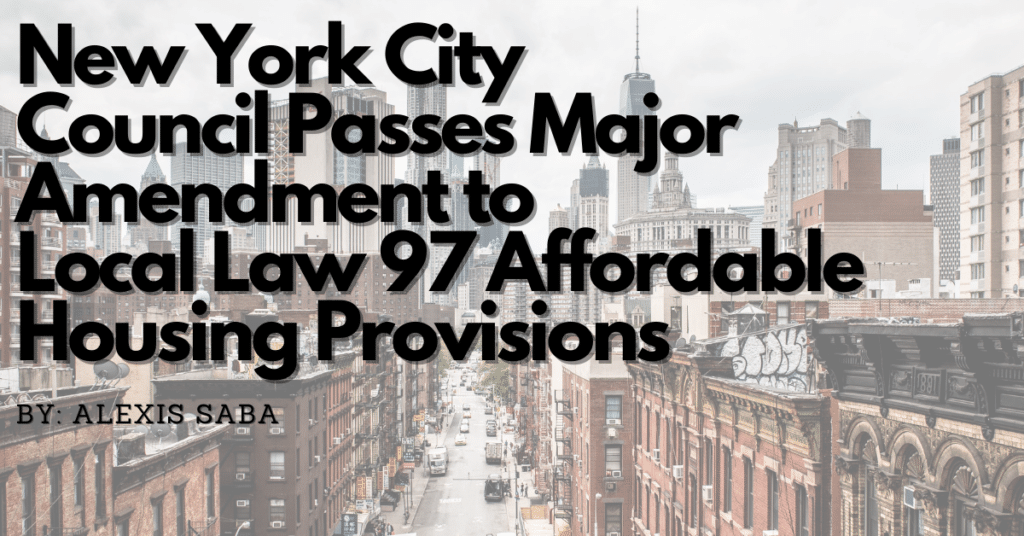Blog

New York City Council Passes Major Amendment to Local Law 97 Affordable Housing Provisions
On October 29, 2020, the New York City Council passed Int. No 1947-A—a bill that significantly amends the affordable housing provisions of Local Law 97 of 2019 to require more buildings to meet greenhouse gas emissions caps.
Local Law 97 and the technical amendments in Local Law 147 of 2019 require most new and existing buildings in New York City over 25,000 gross square feet to meet carbon emissions caps starting in 2024. Certain types of affordable housing, including “rent regulated accommodations,” can install prescribed energy conservation measures instead of meeting the caps. Local Law 147 defines “rent regulated accommodations” as buildings “containing one or more dwelling units required by law or by an agreement with a governmental entity to be regulated in accordance with the emergency tenant protection act of 1974, the rent stabilization law of 1969, or the local emergency housing rent control act of 1962.” This definition encompasses buildings with one or more rent controlled or rent stabilized units.
Int. No. 1947-A significantly amends the definition of “rent regulated accommodations”—from buildings containing one or more dwelling units required to be regulated under the listed statutes to buildings in which more than 35% of dwelling units are rent regulated. This amendment will require many more buildings to meet the carbon emissions caps, including Affordable Housing New York (formerly known as the NYC 421-a tax exemption program) and 80/20 buildings.
Buildings that were covered under the prior definition of “rent regulated accommodations” but that no longer meet the definition under Int. No. 1947-A receive a two-year extension of time to meet the 2024 carbon emissions caps until January 1, 2026, as well as a two-year extension to submit the first annual compliance report until May 1, 2027. However, this delay in compliance will not give building owners much time before the emissions caps become much more stringent in 2030. A prudent compliance strategy will account for both compliance periods in financial planning and the installation of retrofits.
The amendment will reduce greenhouse gas emissions at more buildings and likely accelerate a shift away from burning fuel oil onsite, thereby decreasing emissions of local air pollutants. However, the amendment could put a financial strain on certain affordable housing owners, especially as the NYS Housing Stability and Tenant Protections Act of 2019 reduced the number of buildings that can pass on the costs of major capital improvements to rent stabilized tenants.
Cost concerns could be mitigated by a variety of compliance and financing options for affordable housing owners. In addition to existing financing and incentive programs, the City’s forthcoming Property Assessed Clean Energy (“PACE”) loan program will provide a favorable financing option for energy efficiency retrofits and renewable energy installations. The City issued proposed rules to implement the PACE loan program in late October 2020, with the expectation that financing will be available in early 2021. Another potential compliance option for affordable housing owners could be emissions trading. In January 2021, the City will release the results of its study on an emissions trading scheme, which would allow building owners to trade emissions credits among their portfolios or even City-wide. Finally, Local Law 97 allows building owners to apply for adjustments to their emissions caps under certain circumstances, including where compliance will cause financial hardship, as defined under the Law. While the NYC Department of Buildings is expected to release adjustment application guidance in early 2021, building owners should start strategizing with respect to potential adjustment applications now, as they require detailed technical, financial and legal input well ahead of the application deadline.